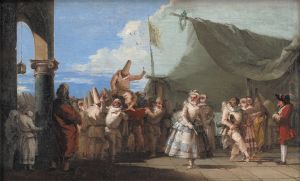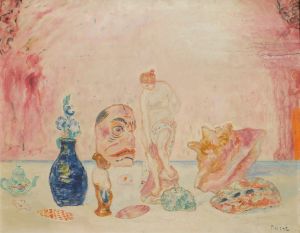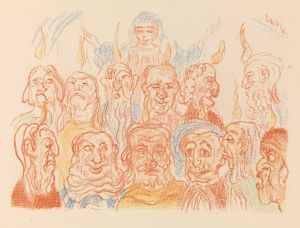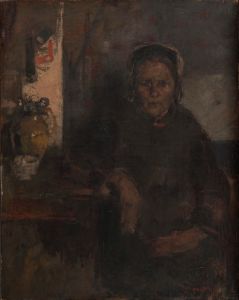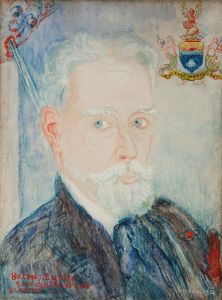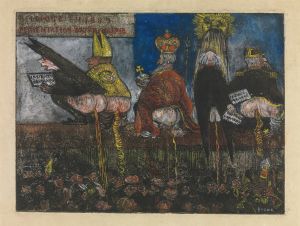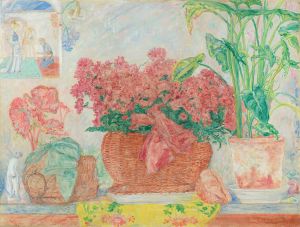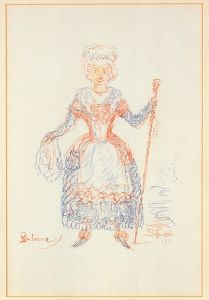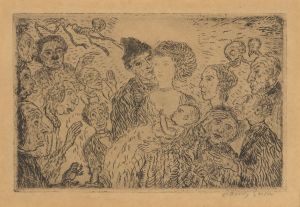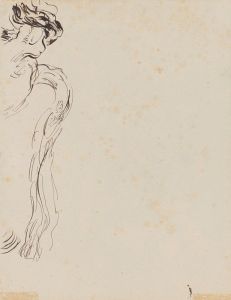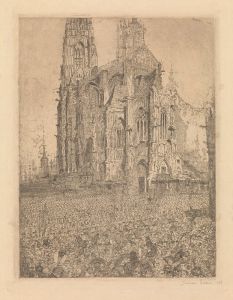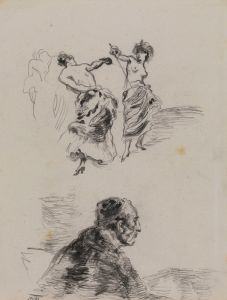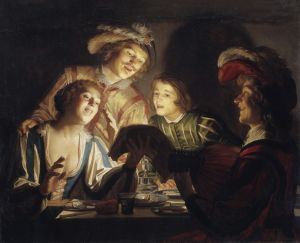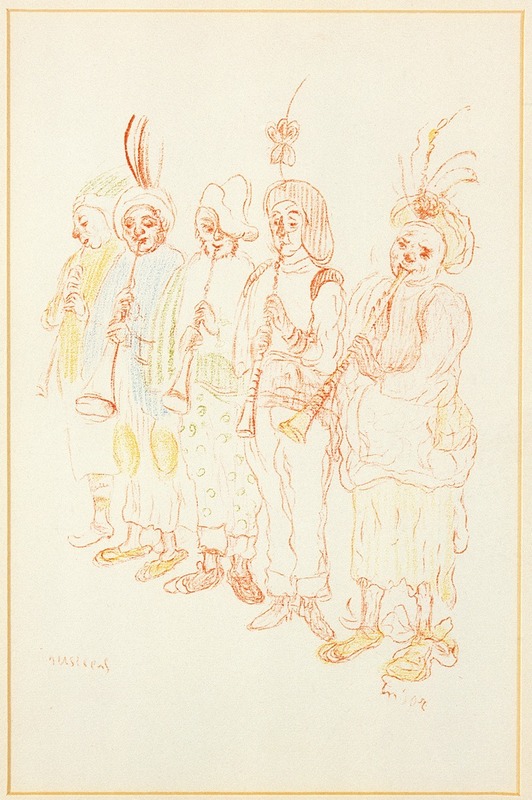
Muzikanten II
A hand-painted replica of James Ensor’s masterpiece Muzikanten II, meticulously crafted by professional artists to capture the true essence of the original. Each piece is created with museum-quality canvas and rare mineral pigments, carefully painted by experienced artists with delicate brushstrokes and rich, layered colors to perfectly recreate the texture of the original artwork. Unlike machine-printed reproductions, this hand-painted version brings the painting to life, infused with the artist’s emotions and skill in every stroke. Whether for personal collection or home decoration, it instantly elevates the artistic atmosphere of any space.
James Ensor, a prominent Belgian painter and printmaker, created "Muzikanten II" during a period when his work was characterized by a unique blend of realism and fantasy. Ensor was born in 1860 in Ostend, Belgium, and he spent most of his life there. He is best known for his innovative use of color and his ability to convey complex themes through his art. Ensor's work often includes elements of satire, social commentary, and a fascination with masks and skeletons, which are recurring motifs in his oeuvre.
"Muzikanten II" is one of Ensor's intriguing pieces that reflect his interest in music and performance. The painting is part of a broader series where Ensor explores the theme of musicians and the act of making music. This particular work showcases Ensor's distinctive style, which often combines elements of the grotesque with vibrant, expressive colors. The musicians depicted in the painting are rendered with Ensor's characteristic attention to detail and his penchant for the theatrical.
Ensor's fascination with music can be traced back to his upbringing in Ostend, where he was exposed to a variety of cultural influences. His family owned a curiosity shop that sold carnival items, which likely inspired his lifelong interest in masks and theatricality. This background is evident in "Muzikanten II," where the figures may appear to be more than just musicians; they could be seen as performers in a larger, more surreal narrative.
The painting is notable for its use of color and composition. Ensor employs a vivid palette that brings the scene to life, with bold strokes and dynamic contrasts that draw the viewer's eye across the canvas. The figures are arranged in a way that suggests movement and rhythm, capturing the essence of a musical performance. This dynamic quality is a hallmark of Ensor's work, as he often sought to convey a sense of energy and emotion through his art.
Ensor's work, including "Muzikanten II," was influential in the development of modern art, particularly in the expressionist movement. His ability to blend reality with fantasy, and his use of color and form, inspired many artists who came after him. Despite facing criticism and misunderstanding during his early career, Ensor's contributions to art were eventually recognized, and he became an important figure in the history of modern art.
"Muzikanten II" is housed in a collection that appreciates Ensor's unique vision and his ability to capture the complexities of human experience through the lens of music and performance. The painting continues to be studied and admired for its artistic merit and its place within Ensor's broader body of work. Through "Muzikanten II," viewers are invited to explore the interplay between reality and imagination, a theme that Ensor masterfully navigated throughout his career.





